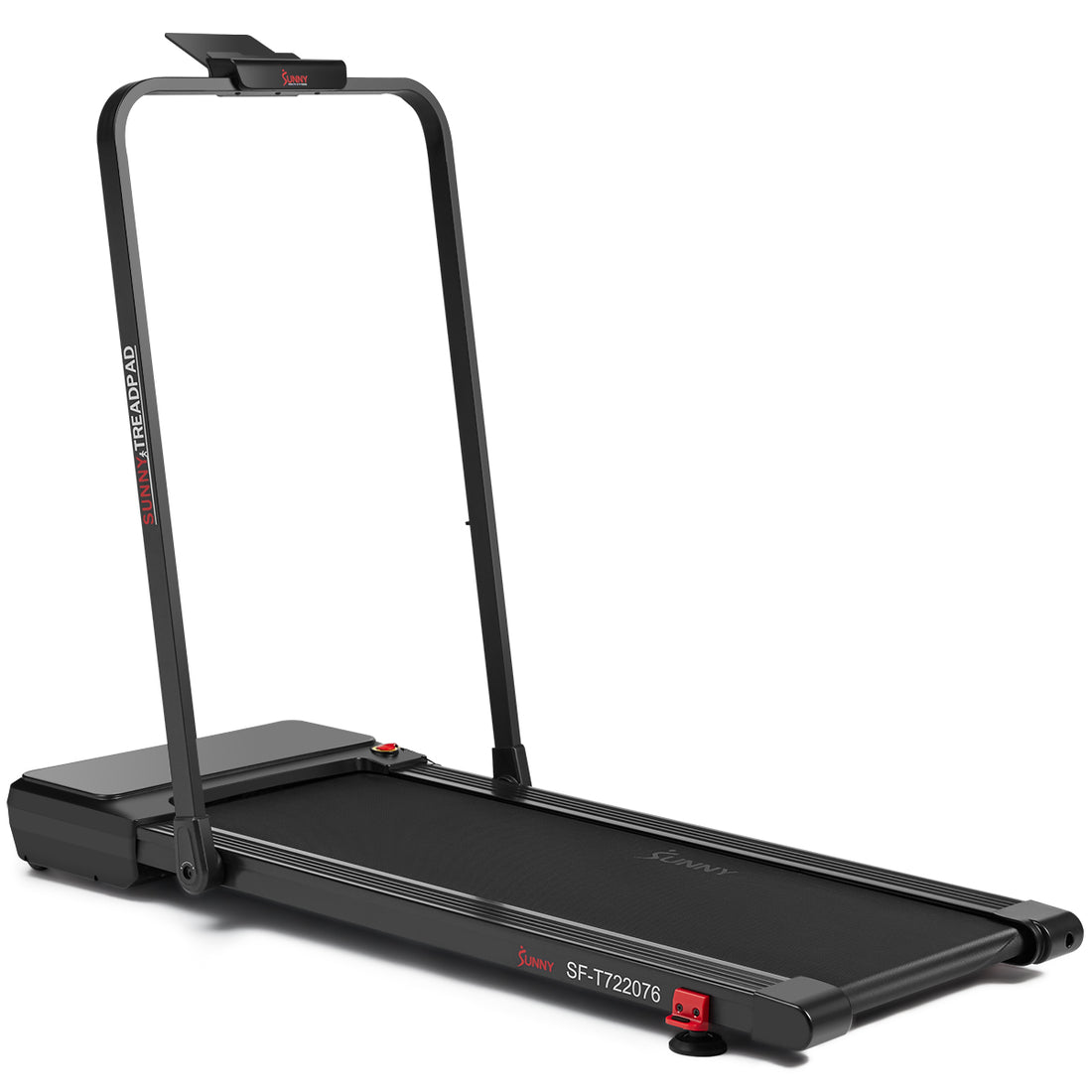As women traverse the often-tumultuous journey of perimenopause and menopause, the physical and emotional changes they experience can feel overwhelming. Yet, amid the hormonal fluctuations and the onset of new health challenges, one powerful tool remains within reach: muscle.
Building and maintaining muscle mass during these transformative years is not merely about aesthetics; it is a vital component of overall health and well-being. Engaging in strength training and resistance exercises can help counteract the effects of aging, combat the risks of osteoporosis, and enhance metabolic health, ultimately empowering women to navigate this pivotal phase of life with strength and resilience. Understanding the crucial role of muscle in this context not only sheds light on the importance of physical fitness but also offers a pathway to reclaiming vitality during a time often characterized by uncertainty.
Breaking Down Perimenopause and Menopause
As women transition through various stages of life, the changes in their bodies can be profound, particularly during the perimenopausal and menopausal phases.
Perimenopause marks the years leading up to menopause, characterized by fluctuating hormone levels, particularly estrogen and progesterone. This phase can begin as early as a woman’s late 30s and may last for several years, leading to a myriad of physical and emotional symptoms.
Menopause, on the other hand, is defined as the point in time when a woman has not experienced a menstrual period for twelve consecutive months, signaling the end of reproductive capability. Both stages are accompanied by significant physiological changes that can impact a woman's overall health, particularly concerning muscle mass, bone density, and cognitive function.
Health Changes Through Perimenopause and Menopause
One of the primary concerns during these transitions is the risk of sarcopenia, the age-related loss of muscle mass and strength. This condition can begin in the perimenopausal phase and significantly accelerates after menopause, contributing to decreased mobility, increased risk of falls, and a diminished quality of life. In conjunction with sarcopenia, osteoporosis becomes a critical concern. As estrogen levels decline, bones can lose density, leading to a higher risk of fractures. This combination of muscle and bone deterioration necessitates proactive strategies to maintain physical health.
Beyond physical changes, there are also cognitive health implications associated with menopause. Research suggests that hormonal fluctuations may influence the risk of developing neurodegenerative conditions such as Alzheimer's disease. As women age, they may face an increased vulnerability to cognitive decline, making it imperative to adopt lifestyle practices that support brain health.
The Importance of Maintaining (and Building!) Muscle
Dr. Stacy Sims is a prominent exercise physiologist and nutrition scientist renowned for her work in women's health and fitness, particularly during the perimenopausal and menopausal stages. With a focus on the unique physiological needs of women, Dr. Sims emphasizes the importance of strength training and muscle preservation during these critical life phases. Her research highlights that building muscle is not only essential for maintaining functional strength and mobility but also plays a crucial role in metabolic health, hormonal balance, and cognitive function. Her popular works, including the bestselling book Roar: How to Match Your Food and Fitness to Your Cycle[1]) and her recent publication Next Level, explore the critical relationship between female physiology, exercise, and nutrition.[2]
In these works, she highlights the importance of tailoring strategies to align with the unique needs of women, especially during significant life transitions like perimenopause and menopause.
Dr. Sims advocates for a tailored approach to exercise and nutrition that considers the specific challenges women face during perimenopause and menopause. She emphasizes that resistance training can counteract the effects of sarcopenia and osteoporosis, helping women retain muscle mass and bone density. Additionally, her insights suggest that engaging in regular strength training can enhance overall well-being, improve mood, and mitigate some of the cognitive decline associated with hormonal changes.
On the other hand, long-duration cardio exercises, while beneficial in moderation, can be detrimental to women's health during perimenopause and menopause. Excessive cardiovascular training can lead to increased cortisol levels, which may further exacerbate muscle loss and fatigue.
When women focus solely on endurance activities without incorporating strength training, they may inadvertently contribute to the decline of their muscle mass, leading to menopause muscle weakness. It's essential to strike a balance in fitness routines, ensuring that cardiovascular health is maintained while prioritizing strength training to preserve muscle.
The science behind Dr. Sims' recommendations is backed by numerous studies that illustrate how strength training can lead to improved muscle hypertrophy, increased bone mineral density, and enhanced insulin sensitivity. As women enter perimenopause and menopause, prioritizing strength training becomes not just a strategy for physical fitness but a vital health intervention that can significantly reduce the risk of debilitating conditions.
As we explore the distinctions between perimenopause and menopause, and the critical changes that occur in a woman's body, it becomes clear that understanding these phases is essential for empowering women to take charge of their health and well-being.
I love sharing Dr. Sims' work because it empowers women to take control of their health, providing them with practical tools and knowledge to enhance their physical and mental well-being. Dr. Sims’ commitment to educating women about the interplay between hormones, exercise, and nutrition resonates deeply with me, especially since the topics of women’s aging and hormonal changes are often overlooked in modern medicine. Her research fills a crucial gap, encouraging a more informed and proactive approach to fitness and health. Through her insights, women can embrace their strength and vitality, navigating life's transitions with confidence and resilience.
Methodology for Women's Training
Dr. Sims advocates for a training regimen that encompasses a variety of components tailored specifically for women in these transitional life phases. Key elements of her methodology include:
- Resistance Training: Dr. Sims emphasizes the importance of lifting weights to combat sarcopenia. Research shows that strength training is effective in preserving muscle mass and improving strength, particularly in postmenopausal women. A study published in the Journal of Aging Research found that resistance training significantly improves muscle mass and strength in older women, which is crucial for maintaining mobility and independence.[3]
- High-Intensity Interval Training (HIIT): Incorporating HIIT can be beneficial for women during perimenopause and menopause. A study in the Journal of Strength and Conditioning Research highlighted that HIIT not only helps in preserving muscle mass but also improves cardiovascular health, which is particularly important as the risk of heart disease increases after menopause.[4]
- Nutrition Focus: Dr. Sims places a strong emphasis on the role of nutrition in conjunction with exercise, particularly the importance of protein intake to support muscle synthesis. Research has indicated that adequate protein consumption is vital for maintaining muscle mass during aging. A meta-analysis in the American Journal of Clinical Nutrition found that higher protein intake is associated with better muscle mass preservation in older adults.[5]
- Mind-Body Connection: Dr. Sims also advocates for incorporating mindfulness and recovery practices into training. Stress management techniques, such as yoga or meditation, can help mitigate some of the emotional and psychological symptoms associated with hormonal changes.
Cognitive Health Considerations
Cognitive decline is another critical issue during menopause, and Dr. Sims emphasizes that physical activity, particularly strength training, can play a protective role.
A study published in Frontiers in Aging Neuroscience found that regular physical activity is associated with a lower risk of cognitive impairment in older women.[6] This reinforces the idea that maintaining an active lifestyle is essential for both physical and mental health during the menopausal transition.
A Beginner’s Guide to Exercise During Perimenopause and Menopause
Monday: Upper Body
Complete a 5–10-minute warm-up using dynamic exercises that focus on mobility and range of motion like arm circles, hip circles, toy soldiers, and toe-scoops.
Then, choose a compound lift that incorporate multiple muscle groups. This might be a bench press, rows, or pull-ups.
Take your time to work your way up to a heavy set to challenge your muscles. It should feel challenging by the 8th rep. Intensity is high, whatever that means to you! Every woman is different, so make sure to listen to your body.
Do 3 sets of 6 to 8 reps with high intensity – this means heavy.
Next, pick isometric or accessory lifts, such as bicep curls, triceps pull downs, or push presses. You’ll want to go heavy here as well – challenge yourself to complete around 3 sets of 8 reps, where the last few reps feel challenging.
From here, you can opt for core work or a cool down. For core, perform plank holds or crunches for 2 or 3 sets until fatigue. To cool down, you can settle into yoga and restorative practices to stretch and de-stress.
Tuesday: Rest
Wednesday: Lower Body Day
Complete a 5–10-minute warm-up using dynamic warmups and stretches focusing on mobility and range of motion like arm circles, hip circles, toy soldiers, and toe-scoops.
Then, choose a compound lift, like squats, deadlifts, or lunges. Take your time to warm up to a heavy set to challenge your muscles. It should feel hard to accomplish by the 8th rep. Intensity is high, whatever that means to you!
Every woman is different, so be sure to listen to your body. Do 3 sets of 6 to 8 reps with high intensity – this means heavy.
Next, pick an isometric or accessory lift, such as hamstring curls, leg extensions, or calf raises. Go heavy here as well and challenge yourself to complete about 3 sets of 8 reps where the last few reps feel challenging.
From here, you can opt for core work or a cool down. For core, perform plank holds or crunches for 2 or 3 sets until fatigue. To cool down, you can settle into yoga and restorative practices to stretch and de-stress.
Thursday: HIIT
Using a curved treadmill or fan bike, warm up with a light to moderate pace for 5 minutes. Next, get off the machine to stretch and make dynamic moves for another 5 minutes. Then jump in your machine of choice and go as hard as you can for 20 seconds.
I'm talking about an all-out effort, where your heart rate is reaching its max, you are feeling breathless, and you are rating the effort at a 9 - 10 out of 10. When the 20 seconds are complete, find a recovery pace for about 90 seconds and then repeat this for 5 rounds.
If it is your first time, you may only last 3 rounds – and that’s okay! Do your best with each all-out effort.
When done, find a yoga, stretch, and destress practice to cool down. You can follow any of our cool-downs on the SunnyFit app with any of our trained and certified coaches.
Friday: Full Body
Complete a 5–10-minute warm-up using dynamic stretches focusing on mobility and range of motion like arm circles, hip circles, toy soldiers, and toe-scoops.
Then, choose a power lift, like cleans or a deadlift to front squat. Take your time working up to a heavy set to challenge your muscles. It should feel hard to accomplish by the 8th rep. Intensity is high, whatever that means to you!
Everyone is different, so make sure to listen to your body. Do 3 sets of 6 to 8 reps with high intensity – this means heavy.
Next, pick an isometric or accessory movement, such as banded rows, leg extensions, or even with a dumbbell accessory like presses, bicep curls, or walking lunges. Go heavy here as well and challenge yourself to complete about 3 sets of 8 reps, where the last few reps feel challenging.
From here, you can opt for core work or a cool down. For core, perform plank holds or crunches for 2 or 3 sets until fatigue. To cool down, you can settle into yoga and restorative practices to stretch and de-stress.
Saturday: HIIT
Repeat what you did on Thursday on a different machine. If you do not have access to these machines, you can try a run outside.
Sunday: Rest
How Strength Training Can Help
Strength training offers numerous benefits for women going through menopause, addressing both physical and mental health aspects during this transformative phase.
Here are some key ways in which it can be particularly beneficial:
- Muscle Preservation: One of the most significant benefits of strength training is its ability to counteract menopause muscle weakness. As estrogen levels drop, women are at a higher risk for muscle loss. Engaging in regular resistance training helps preserve muscle mass, which is vital for maintaining strength and overall physical function.
- Bone Health: Menopause increases the risk of osteoporosis due to decreased estrogen levels, which can lead to bone density loss. Strength training enhances bone strength by stimulating bone formation and reducing the risk of fractures, making it a crucial part of maintaining skeletal health during menopause.
- Metabolic Boost: Strength training can help elevate metabolism, which may slow down due to hormonal changes. By increasing muscle mass, women can enhance their resting metabolic rate, helping to manage weight and combat menopause-related weight gain.
- Improved Mood and Mental Health: The hormonal fluctuations during menopause can lead to mood swings, anxiety, and depression. Strength training has been shown to release endorphins, which can improve mood and promote a sense of well-being. Additionally, the sense of accomplishment from achieving fitness goals can boost self-esteem and confidence.
- Enhanced Functional Fitness: Strength training improves overall physical fitness, making daily activities easier and more manageable. This can help women maintain independence and quality of life as they age, reducing the risk of falls and injuries.
- Better Sleep: Many women experience sleep disturbances during menopause. Engaging in regular strength training can promote better sleep quality, helping to alleviate insomnia and improve overall restfulness.
- Hormonal Regulation: Although strength training itself does not directly affect hormone levels, regular exercise can contribute to better overall hormonal balance. This can help alleviate some of the symptoms associated with menopause, such as hot flashes and mood swings.
The Takeaways
Incorporating strength training and a healthy, well-rounded diet during menopause can significantly improve physical health, enhance mental well-being, and promote a better quality of life. They are powerful tools for women to navigate this life stage with strength and confidence.
In addition to diet and exercise, lifestyle choices such as limiting alcohol intake and quitting smoking can have a positive impact on bone strength. Regular health check-ups, including screenings for bone density, can help identify potential issues early, allowing for timely interventions.
Proper hydration is important, as it supports overall bodily functions and nutrient absorption. It may be beneficial to consider supplements for calcium and vitamin D if dietary intake is insufficient, but this should be discussed with a healthcare provider. Furthermore, moderating caffeine consumption can help enhance calcium absorption.
Engaging in balance and flexibility exercises, such as yoga or tai chi, can improve stability, reducing the risk of falls and related fractures. By adopting these comprehensive strategies, individuals can take proactive steps to maintain their bone health as they age, ultimately promoting strength, stability, and a higher quality of life.
Understanding the hormonal changes associated with perimenopause and menopause is crucial for women seeking to maintain their health and vitality during this transition. By recognizing the importance of muscle and incorporating strength training into their fitness routines, women can mitigate the effects of menopause and muscle loss, ultimately enhancing their overall well-being. Embracing a holistic approach to health that includes both cardiovascular and strength training will empower women to thrive during this significant life stage.
REFERENCES:
1. Sims, S. T. (2016). Roar : how to match your food and fitness to your female physiology for optimum performance, great health, and a strong, lean body for life. Rodale.
2. Sims, S. T., & Yeager, S. (2022). Next Level. Rodale Books.
3. Ransdell, L. B., Wayment, H. A., Lopez, N., Lorts, C., Schwartz, A. L., Pugliesi, K., Pohl, P. S., Bycura, D., & Camplain, R. (2021). The Impact of Resistance Training on Body Composition, Muscle Strength, and Functional Fitness in Older Women (45–80 Years): A Systematic Review (2010–2020). Women, 1(3), 143–168. https://doi.org/10.3390/women1030014.
4. Buchheit, M., & Laursen, P. B. (2013). High-Intensity Interval Training, Solutions to the Programming Puzzle. Sports Medicine, 43(5), 313–338. https://doi.org/10.1007/s40279-013-0029-x.
5. Hong, A. R., & Kim, S. W. (2018). Effects of Resistance Exercise on Bone Health. Endocrinology and Metabolism, 33(4), 435. https://doi.org/10.3803/enm.2018.33.4.435.
6. Hamer, M., & Chida, Y. (2009). Physical Activity and Risk of Neurodegenerative disease: a Systematic Review of Prospective Evidence. Psychological Medicine, 39(01), 3. https://doi.org/10.1017/s0033291708003681.
7. Fragala, M. S., Cadore, E. L., Dorgo, S., Izquierdo, M., Kraemer, W. J., Peterson, M. D., & Ryan, E. D. (2019). Resistance Training for Older Adults: Position Statement From the National Strength and Conditioning Association. Journal of Strength and Conditioning Research, 33(8), 2019–2052. https://doi.org/10.1519/jsc.0000000000003230.
8. Paddon-Jones, D., Campbell, W. W., Jacques, P. F., Kritchevsky, S. B., Moore, L. L., Rodriguez, N. R., & van Loon, L. J. (2015). Protein and healthy aging. The American Journal of Clinical Nutrition, 101(6), 1339S1345S. https://doi.org/10.3945/ajcn.114.084061.






























Add Your Name & Email
Please enter your name and email to continue.We won’t display your email publicly.
2 comments
Wow this was very eye opening and informative- I love the workout portion and willing to hear more on this topic. Can This trainer also give us old ladies more workouts on video?
Hi there,
I think you guys are doing a great job in supporting everyone with info! I bought an Epeliptical bike from Sunny Health…your product stands tall! I love mine.